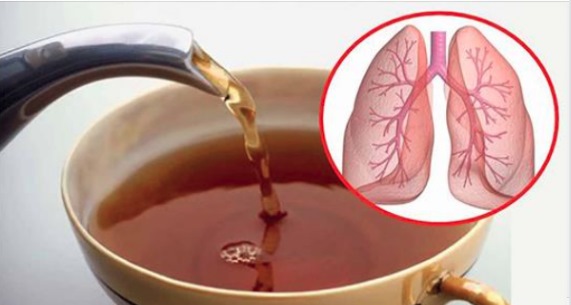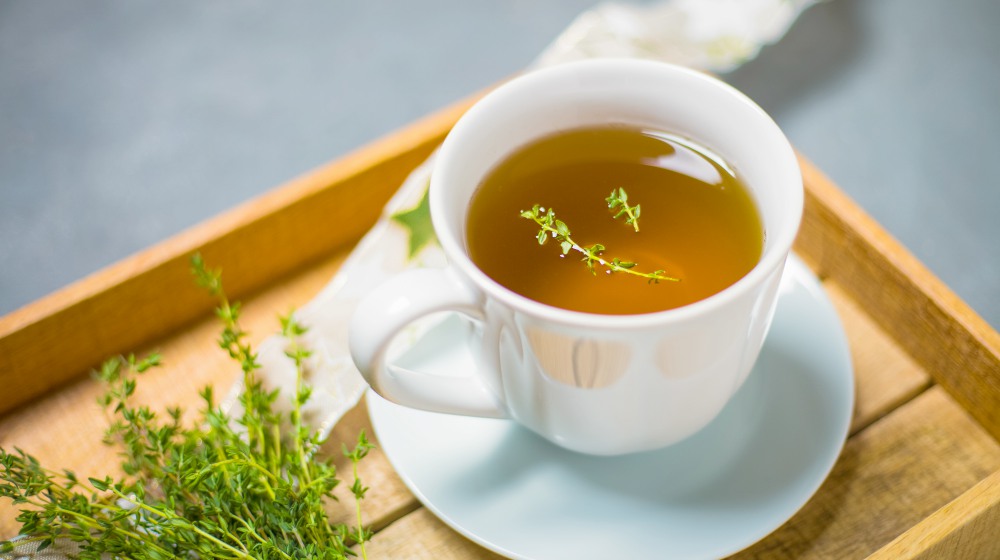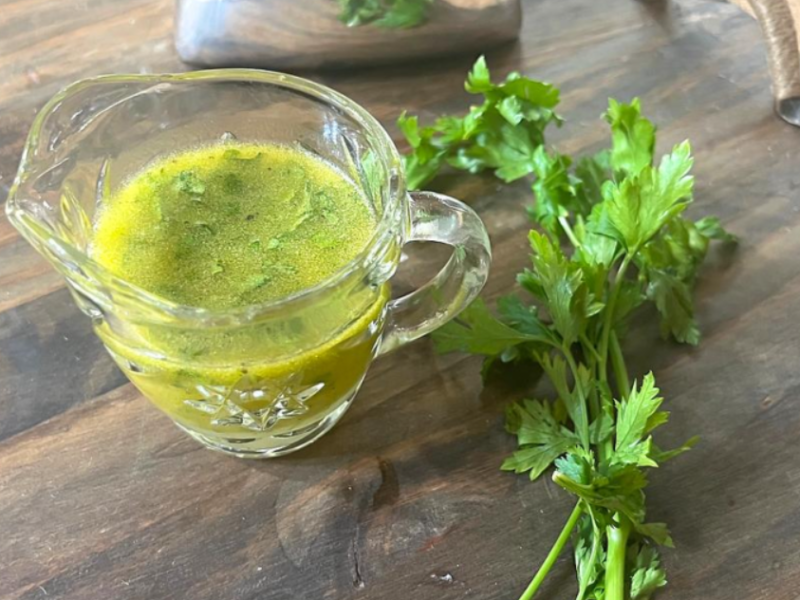Thyme is an aromatic plant that thrives in sunny, warm climates and has been used medicinally for thousands of years. Thyme (Thymus vulgaris) is the most effective of all the medicinal herbs and has a wide range of therapeutic benefits.
Antioxidants, vitamins, and minerals are abundant in it. Thyme leaves are rich in minerals like iron, calcium, potassium, and phosphorus as well as vitamins A, C, E, and K.
Its high vitamin C content strengthens the immune system, and all the other nutrients have a variety of health advantages, including the ability to treat respiratory problems, calm infections, ease digestive disturbance, and much more.
Thyme oil is a potent essential oil for healing that has potent antibacterial and antimicrobial effects. Thymol, its primary ingredient, is a strong antioxidant. E. coli, Staphylococcus aureus, Salmonella typhimurium, and Klebsiella pneumoniae are just a few of the bacteria strains that might be eliminated by this essential oil’s antifungal and antibacterial capabilities.
Thyme comes in 300 different kinds and chemotypes, or plants that look similar but differ chemically. Depending on the chemotype, the oil may have a slightly different chemical structure, which has an impact on its usage. Known chemotypes include:
Find out more about: How To Clean Your Colon Of Pounds Of Waste In Two Weeks
Thymus vulgaris thymol — This substance is 60–70% thymol and exhibits potent antibacterial properties. It is gathered in the fall and goes by the names “thyme” and “red thyme.”
Thymus vulgaris linalool — It is the most gentle of all thyme chemotypes, and is known as “garden thyme.” It has powerful antiparasitic and antifungal properties and is grown in high altitudes.
Thymus vulgaris geraniol ¬– It has a lemon-like fragrance, is picked during autumn, and is grown in high altitudes.
Thymus vulgaris 1,8 cineole — This herb has potent diuretic, anticatarrhal, expectorant, and analgesic effects and contains 80–90% cineole.
Thymus vulgaris phenol – This plant thrives in high altitudes and has phenol content of up to 90%.
Thymus vulgaris carvacrol – This plant produces the chemical carvacrol, of which it contains 30 percent when collected in the spring and 60 to 80 percent when picked in the fall or immediately after flowering.
Thymus vulgaris thujanol – It is found only in the wild, and contains 50 percent thujanol. It is known as “sweet thyme” and has beneficial effects on the immune system and hormones.
Thymus vulgaris p-cymene – It is harvested in spring.
Thymus vulgaris alpha-terpineol – It is harvested during the early spring and has a pepper-like smell.
Additionally, thyme tea is a nutritious beverage that can be utilized as a home remedy for a number of medical issues. It calms coughs and respiratory infections, enhances sleep, reduces inflammation, lessens food poisoning symptoms, and soothes sore throats.
Simply place one teaspoon of dried thyme in a cup and top with hot water. Cover the cup and let it sit for 10 minutes to infuse. The tea should then be strained, sweetened with honey, and consumed several times per day.
Additionally, you can use it as a gargle to calm a sore throat or apply it to the skin to treat skin infections.
Now, let us review the most important health benefits of this herb:
Bronchitis
In order to combat bronchial infections, thyme has potent antibacterial, antispasmodic, and therapeutic effects. According to a study, drinking thyme and primrose root tea can aid with bronchitis symptoms, mucus breakdown, and cough relief. Warm thyme tea will help you breathe easier, alleviate bronchitis, and relieve coughing fits. Drink a couple cups each day.
Yeast and Fungal Infections
chemicals from thyme Due to their fungicidal qualities, thymol and carvacrol kill fungi that can cause pulmonary illnesses like tuberculosis, as well as the Candida albicans yeast that can infect the gastrointestinal tract.
When treating vagi*al yeast infections, place a tampon in the vagi*a for an hour after soaking it in a solution of 3 drops of thyme oil and 1 tablespoon of liquid virgin coconut oil. Repeat each day.
Reduces Blood Pressure
Thyme tea’s rich antioxidant content can help you decrease your blood pressure. Studies have shown that it successfully lowers LDL cholesterol, which has been associated to heart disease, as well as blood pressure and heart rate.
Common Cold and Flu
For the treatment of respiratory infections, thyme tea is a really effective natural medication. It works well against bacteria that are resistant to multiple drugs and naturally treats colds and the flu. Because it is a natural expectorant, thyme breaks up mucus and aids in its elimination in addition to suppressing coughs.
Additionally, thyme essential oil’s scent can be inhaled to help prevent and treat respiratory and flu infections as well as colds.
Allergies
The respiratory system is relaxed by thyme, which prevents allergic reactions. The antispasmodic qualities of this plant serve to relieve the symptoms of asthma, reduce airway inflammation, improve breathing, and deal with wheezing problems. Thyme essential oil can be consumed as thyme tea or inhaled directly from the bottle or in a diffuser.
Strep Throat
Gargle with thyme tea to relieve a painful throat brought on by a strep infection. It has potent antibacterial properties that render numerous Streptococcus bacterial strains and other oral pathogens that cause infections inert. Additionally treating tonsillitis and soothing the throat, thyme water.
You can diffuse a few drops of the essential oil and breathe in the vapors to soothe sore throat symptoms.
Diarrhea
An all-natural treatment for diarrhea is thyme tea. It keeps you hydrated and eases colonic muscle tension. Additionally, it combats colitis signs such abdominal pain and diarrhea.
Anxiety
Stress and anxiety are lessened by thyme tea and thyme essential oil. This plant has an effect that reduces anxiety. To ease anxiety and reduce tension, all you need to do is dab a few drops of thyme essential oil on a tissue and take a deep breath.
Acne
Thyme is an excellent acne treatment because it kills the Propionibacterium acnes bacteria, which also causes whiteheads, pimples, pustules, and acne cysts.
Apply the thyme tea to the acne after dipping a cotton ball in it. Additionally, you can use this tea as a facial cleanser to avoid breakouts of acne by combining it with tea tree oil.
Additionally, combine 10–12 drops of thyme essential oil to 1 ounce (30 ml) of carrier oil and apply to the affected region to cure acne outbreaks.
Mold
Thyme eliminates mold spores and shields people from their harmful side effects, including allergies, asthma, lung infections, and clogged airways.
Making your own anti-mold spray is as simple as mixing 25 drops of thyme oil with 16 ounces of white vinegar or 3% hydrogen peroxide. Then spray the entire area that has mold damage, give it 20 minutes to work, then wipe the area with a moist towel.
Food Poisoning
When bacteria or germs are consumed, food poisoning results, which causes diarrhea, vomiting, inflammation, and cramping in the stomach. But thyme tea combats these signs and kills the infection-causing germs.
Precautions When Using Thyme
You can either regularly consume thyme tea or add it to a variety of foods to enhance their flavor.
However, if you take blood thinners, you should avoid this wonderful herb and stop taking it two weeks before surgery. If you are susceptible to hormone-sensitive illnesses like ovarian cancer, uterine cancer, breast cancer, or endometriosis, such as it can in some people, avoid it as it can also induce allergies and have an estrogen-like impact.
Thyme is simple to grow, and using high-quality leaves collected from your own backyard will give your tea the finest flavor and prevent any potential toxins present in professionally produced tea.
Here’s how to cultivate thyme at home and enjoy all of its health benefits:
Thyme should be planted in a location with lots of sun exposure, well-draining soil, and dry, rocky conditions. You can plant a root or seeds in this situation, but the harvest may grow exponentially.
Cover the plants with evergreen boughs if you reside in a planting zone up north to encourage their springtime regrowth.
Cut the branches in half when they begin to blossom, then hang them in a dry, dark area. To hasten the process, you can also put them on baking sheets and put them in the oven or a food dehydrator.
Remove the leaves from the blooms once they are dry, then store them in a dark area.




